This blog is the second instalment of a two part blog. To read part one click here.
Back in July I visited Nottingham Castle to find out more about the annual archaeological excavation ‘We Dig The Castle’.
A partnership project between Trent & Peak Archaeology, Nottingham City Council and Historic England, this excellent scheme invites volunteers of all ages and backgrounds to get involved, discover more about the Castle’s history and the process of archaeology itself. Trainees take part in excavation, cleaning and recording in the trench, sieving, finds washing and processing, work on environmental samples, surveying, walking tours, workshops and tutorials.
It had been just over a month since my last visit, and in my two brief afternoons with the team I already felt I've learnt a little about the careful precision involved in an excavation - and the thrill of unearthing a find. Being a bit of a nerd about local history I was very intrigued to see what may have emerged from the earth and what it would have revealed about Nottingham’s past...
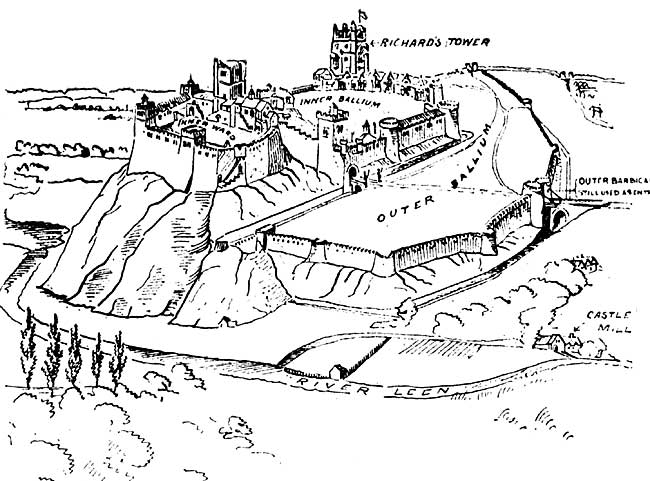
In the past one thousand years castles and legends have come and gone from the immense sandstone rock on which the current Ducal Palace stands. A military stronghold, occasional royal retreat, a burnt out ruin; it may not be a classic fairytale fort but tutor Tristan maintains that the longevity and impermanence of the site is what makes it such a fascinating place for excavation.
“So much has happened here at the castle and there’s such a rich history.” He explains, “We’re seeing it every time we dig: Saxon, Medieval, Civil War, Victorian, World War II and everything in between. When we get further down things will be a bit more secure, so we could have a full Medieval layer or a Civil War layer. If we can make those findings tangible, then we can present them to the people when they visit Nottingham Castle.”
But I soon discover that no find is a conclusive evidence until it has been tested further in a laboratory, so understanding much of what has been unearthed is through guesswork - piecing together clues from verified history, previously tested finds and the landscape around the dig.
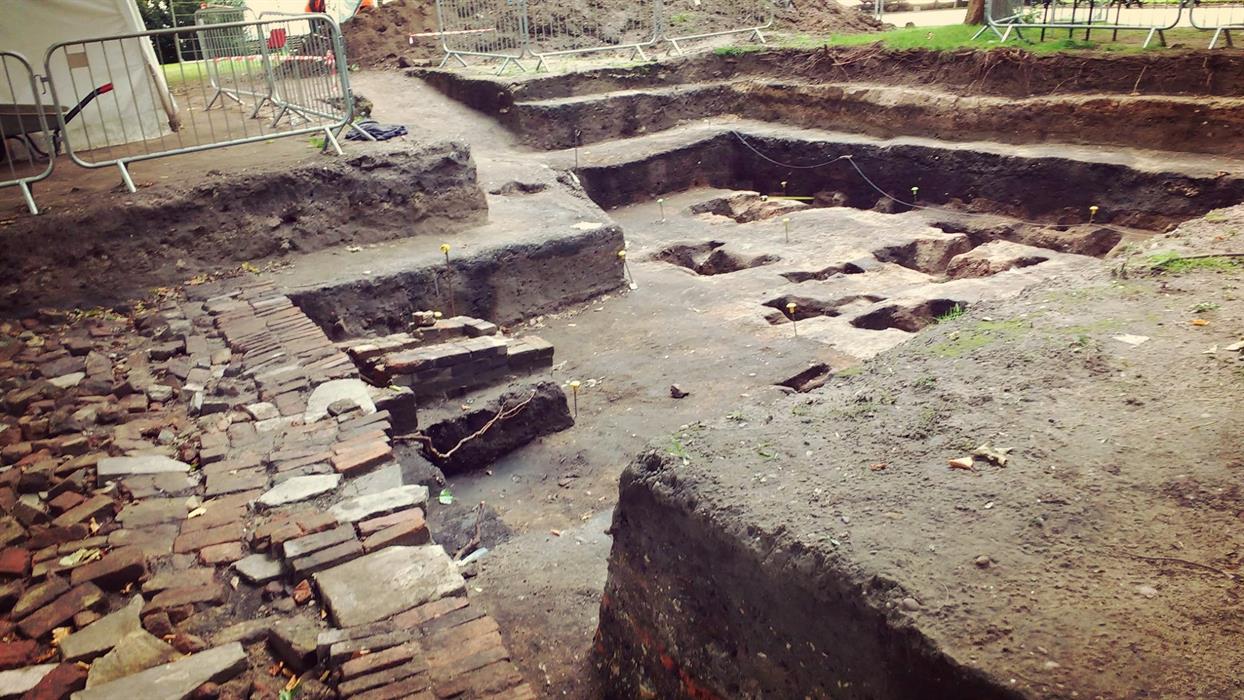
While there have been many things discovered including bones, German pottery, and coins, the repeated finds often give a clearer picture of what may have happened at the site. These are some of the regular artefacts unearthed...
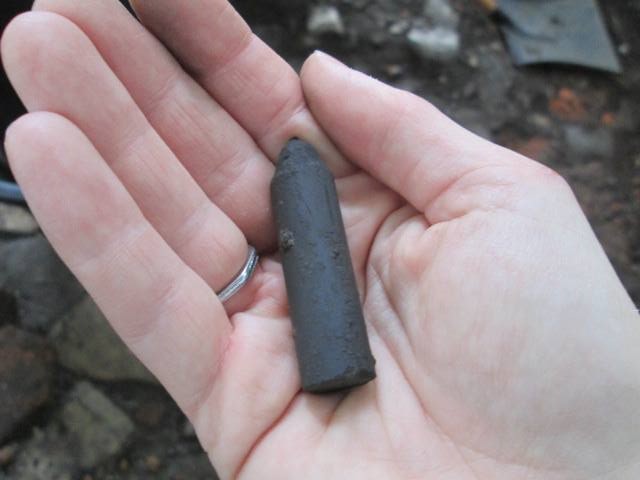
Carbon Rods - It is most likely that these pieces of iron were used throughout the 19th and 20th centuries as arch lights – an early electrical means of producing a strong, harsh light. Their use was gradually limited to when a high intensity point light source was needed, such as for searchlights and movie projectors, until after World War II.
Why here? We know the Castle was used during both wars by the military, it is undetermined why search lights would have been used here however. The great height of the trees around the lower bailey suggests search lights would have been obstructed by branches, so they were perhaps constructed or mounted here rather than used. Another possibility is that these lights were used during Queen Elizabeth’s coronation to light the castle for the town below.
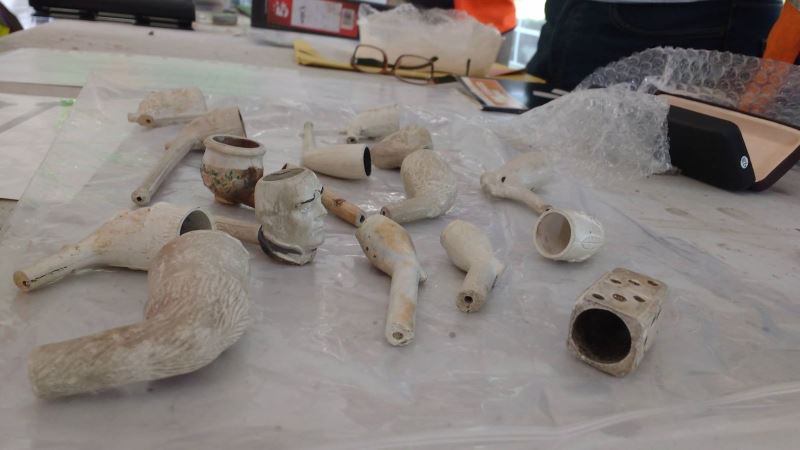
Clay Pipes - These are a typical find in many archaeological digs. Pipe-smoking was so common during the 18th and 19th centuries, at some sites skeletons have been found with a groove in their teeth where the pipe would sit. By observing their design they are easily dateable, so helpful in dating layers.
Why here? Cheap to manufacture, most pipes would last a week or so before being discarded. While with most finds just the tube remains, clay pipe expert joined the team earlier in the week to show off some of the more elaborate designs found.
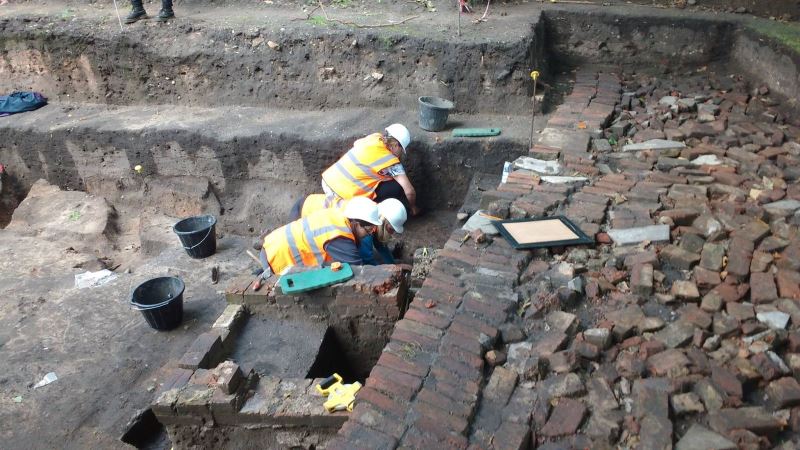
Brick Structures - What first looks to be a brick pathway was unearthed, but it is possible that it may be the foundations for a summer house or building.
Why Here? In the 19th century after the Castle was burnt down, the grounds were taken for public ownership, and it is documented that gardens were built upon the site. Examining the biomatter and soil tells us something about who was growing in the area, namely whether these were gentry gardens or public allotments. If more exotic seeds such as liquorice are found, it is likely they are related to the Ducal Palace.
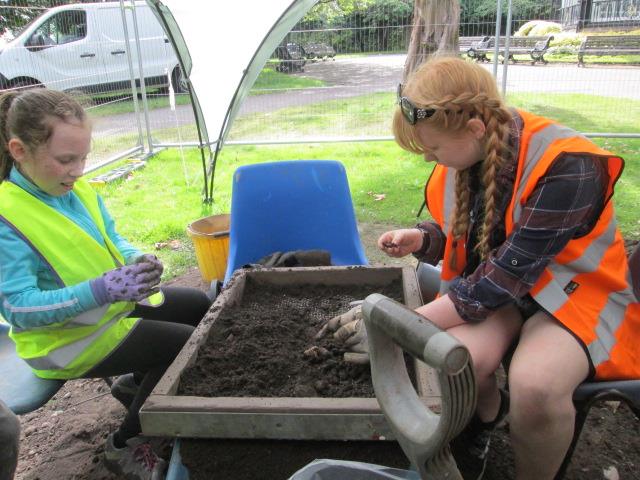
Rubble - Primarily Victorian rubble/slate has been found, however this is mixed with pieces from other periods which has included a piece of 12th/13th century medieval pottery, on top of a Victorian tile and beneath a Georgian brick.
Why Here? When the castle was restored in the 1870s roughly ten metres of land was cleared and levelled from the keep, this could have been later dumped in the middle bailey.
With all of these threads of investigation to follow, it looked mighty tempting to just carry on with the excavation, but Tristan explained the importance of carefully recording and testing samples.
“The important thing in archaeology is recording everything, because it is essentially destructive.” He tells me, “If we don’t make thorough records then really we’ve let down our heritage and future generations because anyone who wants to know what happened here is going to rely on our records. We’re trying to preserve things by demolishing them - it’s a paradox really.”
Over the next year more conclusive results will emerge, adding a little more light to the story of Nottingham Castle, but for now the answers will have to wait as the finds are taken to a lab for testing, the excavation site covered with tarpaulin, and the earth filled back in.
For anyone who is curious about history or archaeology, We Dig The Castle is an excellent opportunity to have a hands on experience at an excavation site, and I am raring to go back myself next year. If you want to get involved too, or to find out more about the project, please go to the We Dig The Castle Website to find out when 2018 applications open.
Follow Trent & Peak Archaeology on Twitter Follow We Dig The Castle on Twitter Follow We Dig The Castle on Facebook
Related
Comments
Comments are disabled for this post.

 to add an item to your Itinerary basket.
to add an item to your Itinerary basket.











